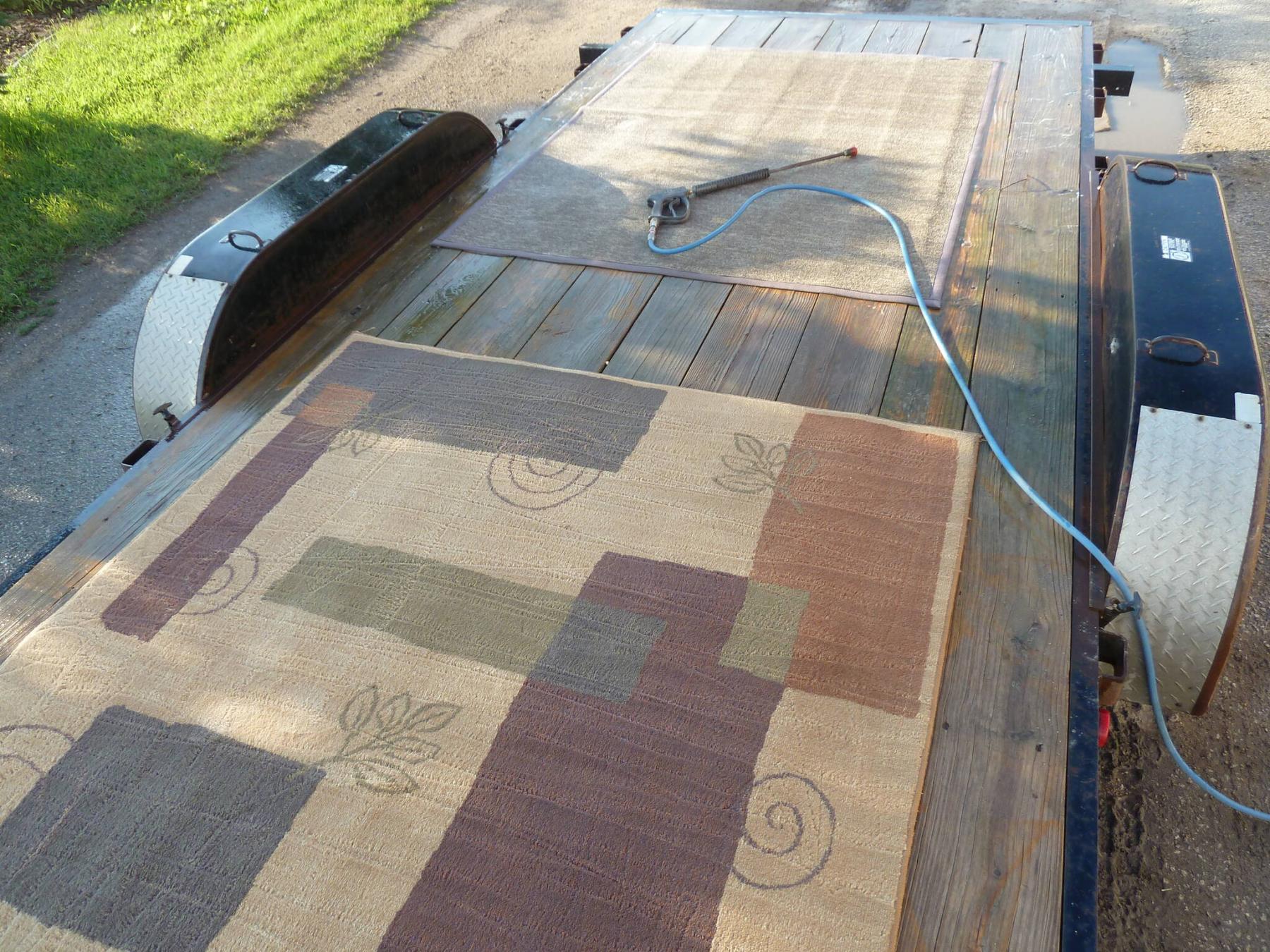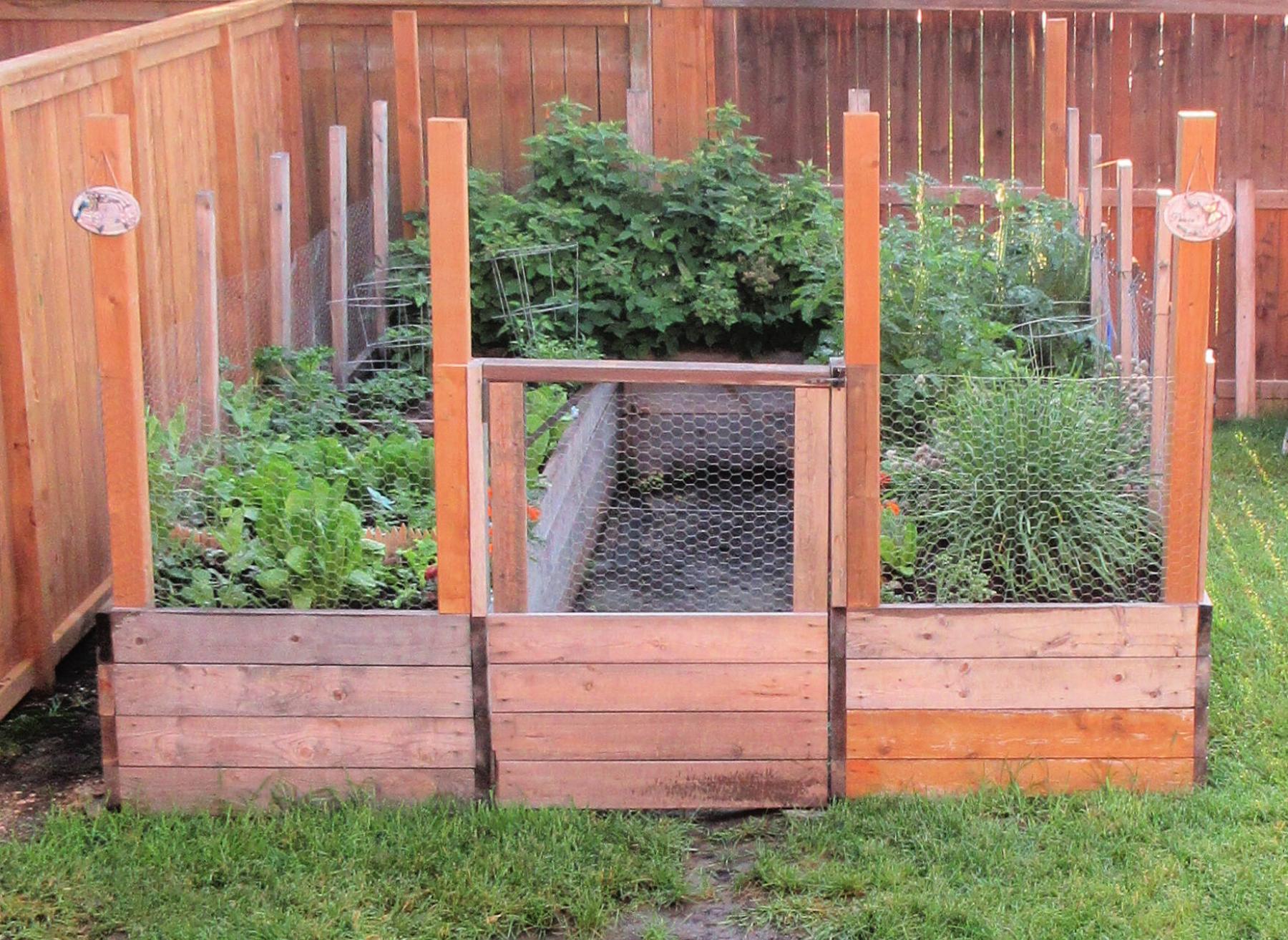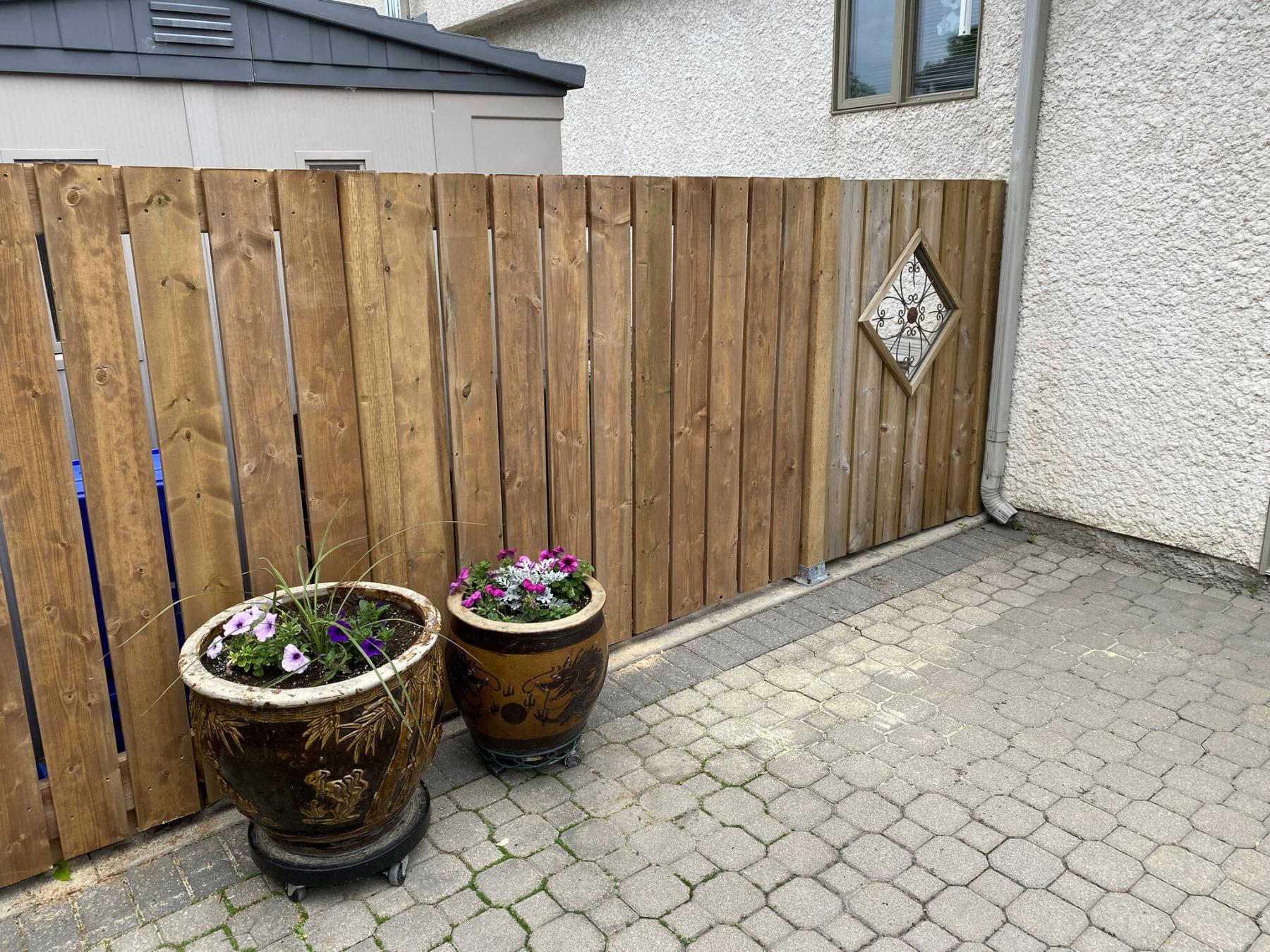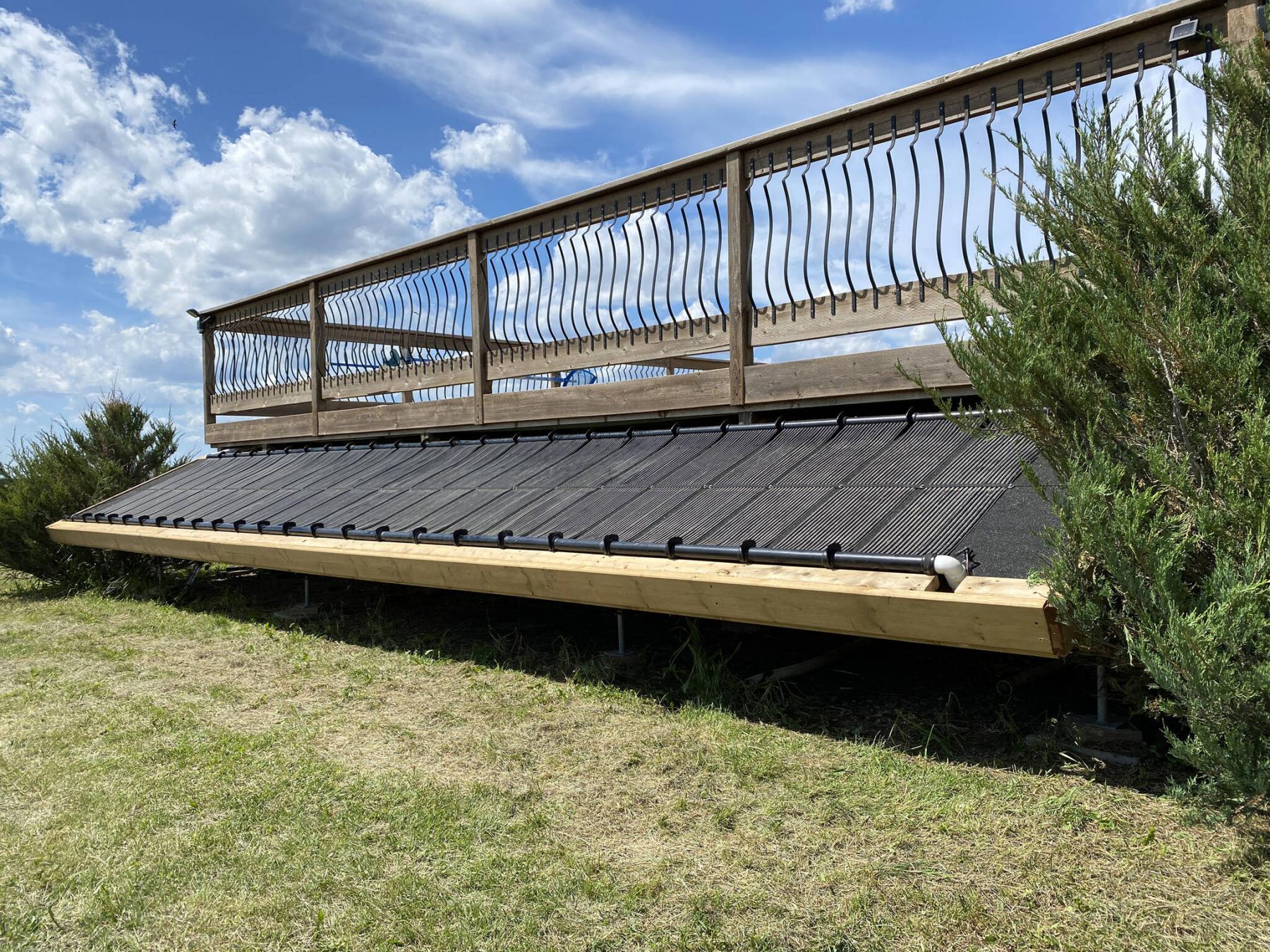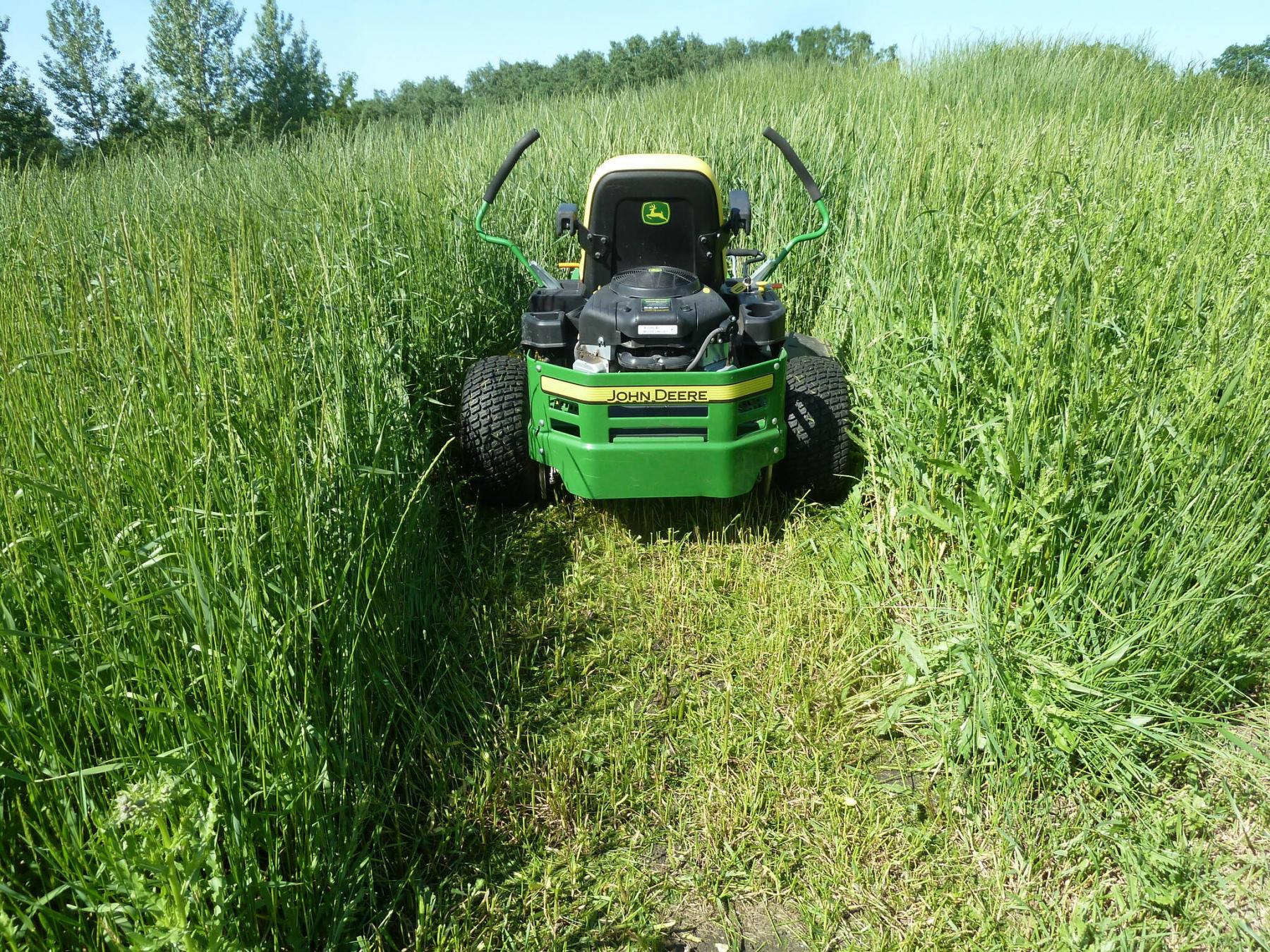Renovation & Design
Renovation & Design
Old chimney vent pipe is likely asbestos-free
Question: A while ago, I removed the top section of my B-vent chimney that goes through the roof. I then insulated and capped the remaining B-vent in the attic below the roof line, patched up the roof and shingles.
Does the B-vent section contain asbestos insulation between the twin walls? I ask because some white powder, similar in texture to sawdust created by a table saw, fell out through some rust holes near the top of the B-vent section I took down. My house was built in 1965. So, do I have hazardous material and if so, how do I dispose of one section of B-vent?
Looking forward to your reply.
Regards, D. Gee.
Answer: Disposing of a hazardous material like asbestos does take some extra precautions, but it is doubtful your small length of old chimney piping will cause much grief. It is very unlikely that it does contain asbestos, but only laboratory testing may be able to determine whether the white powder, or any contents inside the pipe, may be suspect. That process is somewhat costly and proper disposal may be done safely and more easily by a trip to the local landfill facility.
Many furnaces in homes built in the late 1960’s to 90’s were installed with double-walled B-vent piping for their chimneys. Some of these were encased in rectangular metal boxes above the roof, or other forms of built-on-site chases. Many were left uncovered with a metal flashing sealing the exit area through the roof. Most of these pipes had a galvanized steel outer pipe, which made them quite resistant to deterioration from corrosion, even in exterior conditions. Most use the empty airspace between the inner and outer layers for insulation, allowing the piping to be installed with minimal clearance to combustible materials.
Because the majority of B-vents had nothing in the cavity between the two layers, it is highly unlikely that there is any asbestos-containing insulation inside your old vent. The white powder may be simple corrosion from the inner metal pipe, or the joints in between individual sections. You have described visible rust on the outside of the vent, which would allow oxygen and moisture to penetrate to the otherwise sealed cavity or inner pipe. The inner pipe may contain other metals, especially aluminum, which may account for the whitish powder. Aluminum corrosion is sometimes hard to see, as it often clings to the surface. But, in some cases, it will be noticeable in flakes or powder form, which is typically a grey or whitish substance. That is likely what you have observed, mistakenly thinking it was asbestos.
In doing some research, the only vent piping containing asbestos that I could find for residential heating systems was used in the 1950’s. This material called “Transite” was a cement-asbestos pipe and appears to have been used primarily in the United States. It is visibly different from other B-vents, as it does not look like metal. It appears to have been discontinued from use due to common deterioration and collapse of the inner sections. When that occurred, the inside diameter of the pipe would decrease in size, causing serious safety concerns. Since your home was built in the mid 60’s, and because your vent is obviously metal, there is no chance it is a Transite pipe.
Due to the above factors, there should be little concern with any hazardous material being contained within your older B-vent. After knowing this, if you still feel compelled to rule out any asbestos-related issues with disposal, you may be able to test the white powder, if you have sufficient quantity. If you can collect a large enough sample, you could put it into a well-sealed zip-lock bag and take it to a testing laboratory for analysis. There are a few in our area that do asbestos testing and identification and they have a fairly quick turn around time. There is a moderate cost for this service, and it is likely money that you should not have to spend, in this case.
Disposing of a small section of metal B-Vent may be as simple as driving to the Brady landfill, or one of the satellite collection depots, and placing it in the appropriate collection bin for metals. There should be no cost associated with disposal from your own home and the modern “dump” facilities are excellent. There is no longer any need to drive long distances over debris-containing dirt roads, risking nail punctures to your car tires. You may even have some other recyclable materials, such as unused electronics, that could be dropped off at the same time. For more information, check out the City of Winnipeg website before venturing out with the old piping.
There is little chance that your older, double-walled metal furnace vent pipe contains asbestos, which would require special precautions for disposal. A simple trip to the local modern landfill, or associated depot, should be all that is required to properly get rid of the unused old chimney sections.
Ari Marantz is the owner of Trained Eye Home Inspection Ltd. and a Registered Home Inspector (RHI)(cahpi.ca). Questions can be emailed to the address below. Ari can be reached at 204-291-5358 or check out his website at trainedeye.ca.
trainedeye@iname.com
Renovation & Design
Cornstarch will remove that musty book odour
Question: How can I get rid of the smell of old musty books? They smell like an old church. Jacob
Answer: Lightly sprinkle cornstarch between the pages. Leave for about an hour and shake the cornstarch from the pages.
Question: At the inflated cost of food, I want to make sure that everything I buy is fresh. How can I tell if a pineapple is ripe? Fionna
Answer: Tug on one of the pineapple leaves, if the leaf is loose, the pineapple is ripe.
Question: I have a white film on my kitchen cabinets. I tried wiping it off, adding oil conditioner and scrubbing it lightly. Nothing worked, maybe it discoloured the urethane. Any suggestions? Thanks, Pat
Answer: Use a hot hairdryer on the highest setting; move the dryer over the white mark to draw moisture out. As you heat the area, rub the surface with a soft cloth. The sooner you tackle this challenge, the better.
Question: I have a tall, clear, single-stem glass vase and I have been unable to remove etched cloudy watermarks on the inside. I have tried everything from baking soda, salt, vinegar, denture tablets, with no success. Any ideas? Kameron
Answer: When you used vinegar, did you heat the vinegar first? Soaking the vase with hot vinegar and then gently rubbing the surface with fine 000 sandpaper is a satisfactory solution for slightly etched glass. You can also soak the vase in hot water and citric acid (available at your local pharmacy, you may need to order it). If the etching remains, the condition is permanent. Also, if you want to “refresh” seldom-used glassware or crystal which has developed a slight film while sitting in the cupboard, but is not dirty, just hold the piece over the mouth of a steaming kettle, and polish quickly and easily with a paper coffee filter. Your glassware will sparkle again!
Question: How can I remove food stains from the skin on my fingers? Brad
Answer: Cut a slice off a potato and rub the flesh on your fingers to remove food stains.
Here comes the sun!
Before I go to the beach, I add a little baby powder to the inside of all the family member’s socks before they put them on. Sand does not stick to baby powder, and so I do not end up with sand all over the house. — Sandra
I save an empty sunblock bottle, clean it out and cut the bottom off. When I swim at the beach, I slide valuables into the opening and then secure the bottom with a rubber band. — Sandra
Avoid dripping ice cream cones, by putting a marshmallow into the cone, before adding the ice cream. — Paul
More hot tips!
To avoid mowing stripes, alternate your lawn mowing pattern. Avoid mowing grass in the same pattern each time. Mow midmorning, after the dew has evaporated.
The seedless mandarins in the store right now are so good! Get them before they’re gone.
Grow tomatoes in large pots. Layer several sheets of newspaper before adding soil. This will slow escaping water and hold the moisture. When emptying the soil into the compost at the end of the season, you can work the rotting paper directly into the compost.
Real vanilla (not imitation) is great for keeping ticks and mosquitoes away. Wipe vanilla onto skin and let dry. Mosquitoes will not bother you as much, and your skin will smell sweet.
Note: Every user assumes all risks of injury or damage resulting from the implementation of any suggestions in this column. Test all products on an inconspicuous area first.
Have a great suggestion or tip? Please send an email at: info@reena.ca. Reena Nerbas is a popular motivational presenter for large and small groups; check out her website: reena.ca.
Renovation & Design
Heat recovery ventilator great addition to new cottage
Question: I have had a small, 504 square foot house/cottage built, with electric baseboard heat. It’s a new build, very close to the Whiteshell park. The plumbing has not been installed, yet. Do I need an HRV unit?
Jeri D.
Answer: Installing an HRV will be a valuable asset to your new house, but may require additional infrastructure before it will be effective. Planning for proper ducting for the unit should be an integral part of the overall installation process.
The first place you should be inquiring about the requirements for a heat recovery ventilator (HRV) in your new rural home is with the local municipality. The RM should be the one that defines the rules of enforcement of the National Building Code (NBC), in their area. Each jurisdiction can make the judgement call whether to adopt various or all aspects of the NBC. That is enforced by the municipal building official responsible for inspections and compliance of the construction of your home. Even if it is a requirement where your new house resides you may be able to successfully argue that you don’t need it and want an exemption, but you better have a very good case. Because the plumbing is not complete in your home, you may be in time to plan accordingly.
Putting in an HRV in a new home can be quite simple, before the walls and floor coverings are complete. That is because it should be installed with ducting that connects the unit to several rooms in the home. In those areas, the ducting should run vertically up inside the interior partition walls, terminating in a register. The critical areas for those are all bathrooms and near the kitchen. The bathrooms should also have a timed control for the HRV, which allows it to be manually turned on regardless of the settings on the main control. This is the bare minimum for the unit to be effective, as it will quickly eliminate dissolved water vapour in the air from those areas that are the largest source. In the bathrooms that setup will replace older style exhaust fans.
In most new homes with a forced-air heating system, you may be able to limit the number of registers for the ventilation system to those locations described above. That is because the HRV is also normally connected to the return air plenum near the furnace. That is done to help circulate the air passing through the ventilating unit through the entire home. Without those registers and connections, the dry, fresh air coming from the HRV has limited means to get to most of the areas in the building. If it is connected to the furnace ducting, it will easily circulate through the home with the heated air from that unit, which has a much larger blower than the smaller HRV. Unfortunately, with your home being heated by electric baseboard heaters, it is doubtful that you currently have any ducting at all for this purpose.
For you to install a proper heat recovery ventilation system you will have to add proper ducting in the appropriate areas. As stated above, this may be limited to the bathrooms and one other location, but that will not be optimal. To allow the unit to operate more effectively, ducts and registers should be installed in all rooms in the home. That includes any room that may have interior walls and a door. So, you may be able to use the intake register that is near the kitchen to include the main portion of the home, if you have a fairly open concept. The bedrooms and utility room are the other locations where a circulation register should be added. Unfortunately, that may mean partial removal of the new wall and/or floor coverings to install the ducts, if they are already complete. If you have an insulated, heated crawlspace, the majority of the ducting can go through there, but the portions connected to the room registers may require cutting the floor or walls for installation.
It may be possible to install the HRV unit in the crawlspace, if there is enough height, but it should be located near a year-round access panel for essential cleaning and maintenance. The intake and exhaust ducts for the unit, connected to exterior vent hoods, may also go through the crawlspace, limiting the amount of room needed inside the home. What will also be a good idea is to run the ducting for the room registers under the main floor, to minimize the impact of the HRV on the living space inside. If you don’t have enough room in the crawlspace, or if you don’t have a conditioned area under the floor, then installation is almost impossible without exposed ducts inside the home. In that situation the HVAC contractor hired for this job may suggest just installing the unit in a utility room with no ducts, but that may be waste of time. That will only circulate the ventilation air so far, partially due to the limited size of the blower, and will not be worth the money invested.
You may be in a bit of a dilemma if you are forced by local NBC enforcement to include an HRV in your home, depending on the level of inside wall completion. That is unfortunately an error in prior planning, which may be the fault of the builder or due to poor judgement. While electric baseboard heat may be an effective way to heat a small home, it is not designed for modern ventilation and air circulation requirements. Without a furnace, air handler, or ducted ventilation system you will have problems with moisture issues in the heating season. Especially if you are located near a lake, with high relative humidity all year long, moisture problems will be a certainty. Proper installation of an HRV and the associated ducting will go a long way to rectifying that during the cold months.
Adding a properly installed and ducted HRV to the plans for your new home should be mandatory, regardless of the regulatory requirements. Making accommodations for the proper registers and ducts after the fact may be a challenge, but well worth the effort.
Ari Marantz is the owner of Trained Eye Home Inspection Ltd. and a Registered Home Inspector (RHI)(cahpi.ca). Questions can be emailed to the address below. Ari can be reached at 204-291-5358 or check out his website at trainedeye.ca.
trainedeye@iname.com
Renovation & Design
Dish soap and water will get those golf clubs glistening
Question: I just bought new golf clubs and want to keep them clean. What products can I safely use on them? — Ben
Answer: Neglecting to clean golf clubs can impact your overall performance. Dirt that becomes temporarily trapped in the grooves of the clubs impacts the spin of the shot, so it is important to clean clubs regularly.
Use water and a brisk brush to remove all dirt from grooves. Be sure the brush doesn’t damage the clubs. Wipe and dry with a rag. If the clubs are very dirty, dish soap may be necessary, rinse and dry well.
Question: How do I get rid of ants in my peonies flowers? I want to bring them inside. — Kalen
Answer: Fill a bucket with water then submerse flower heads in the water for about one minute before bringing the beautiful and fragrant flowers inside.
Question: I was wondering if you know how to tell if my fine porcelain dishes, from China contain lead. Thanks so much. — Debbie
Answer: Home lead test kits can tell you if the dishes have leachable lead. These tests are most useful in detecting high levels of lead. Home hardware stores carry tests, or you can also purchase them on-line.
Question: Help! Our house seems to have issues with silverfish. I often see them crawling on the carpet in the basement and even in our upstairs tiled shower. Any suggestions? Stan
Answer: Be sure to remove old stacks of newspapers, magazines, papers, books and fabrics plus food spills and food stored for long periods of time. Often reducing available water and lowering the home’s relative humidity with dehumidifiers and fans is helpful. Repair leaking plumbing and eliminate moisture around laundry areas. Once the cause is remedied, there are many products on the market from baits to sprays that will get rid of silverfish, aerosols including Raid and Air Devil work well for hard-to-reach places. As with all insecticides, read the directions and warnings very carefully.
A simple silverfish trap can be made by taking canning jars, scrubbing them clean and then covering the outside with masking tape to make them easy to climb. These traps are then placed in areas of infestation. The bugs will climb up and fall into the jars and then will not be able to climb the walls to escape. Moist cotton or starchy foods work as bait. Also, leave cloves where they like to go, they don’t like the smell. The next step is to use diatomaceous earth (dust) used as filter media in swimming pools. If you know someone with a pool, ask to borrow a cup, or visit a nearby garden store. If the problem persisits call an exterminator.
Homemade ice cream cake
This project contains items that you can always keep on hand. Purchase four litres of your favourite ice cream — vanilla, Oreo, strawberry etc. Place the ice cream box (or bucket) on the counter one hour before use, to soften it a bit.
Into a pot, melt and combine 2/3 cups butter or margarine and three cups graham cracker crumbs (three cups crumbed digestives or Oreos or any cookie). Line a baking pan with parchment paper. Press crumbs into 9-by-13-inch pan or a spring form pan. Pour softened ice cream over crust and spread evenly. Freeze and drizzle with caramel or chocolate syrup.
Here are a few variations on this easy recipe:
• Add 1/2 cup peanuts or peanut butter to ice cream before spreading it into the pan.
• Break up pieces of store-bought cookies or chocolate bars and add to ice cream.
• Add M&Ms, gummy worms or Reese’s Pieces to ice cream.
Freeze for at least four hours. Remove from freezer; loosen sides with a knife (heat knife with hot water). Cut and serve.
Note: Every user assumes all risks of injury or damage resulting from the implementation of any suggestions in this column. Test all products on an inconspicuous area first.
Have a great suggestion or tip? Please send an email. Reena Nerbas is a popular motivational presenter for large and small groups, check out her website: reena.ca.
info@reena.ca.

